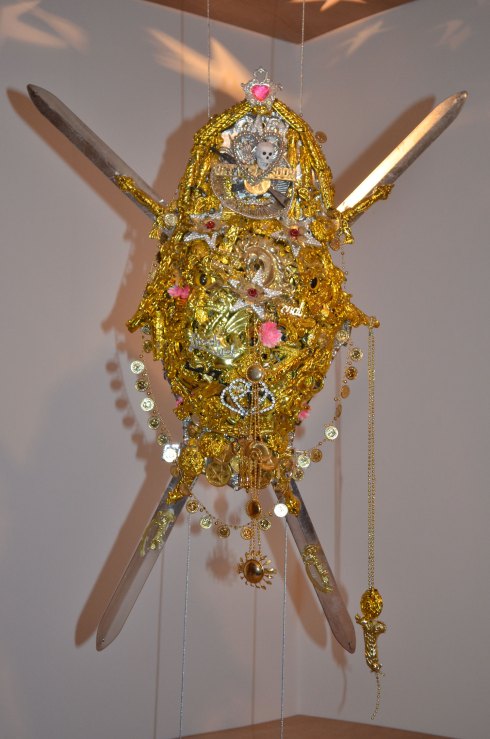Correlations between art and politics have been repeatedly shown and this is clearly apparent among a selection of this year’s graduates that have returned to classical forms, responding to economical situations in Greece particularly. Perhaps this will become known as Post Neo-Classicism or Anarchaic Art.
At Goldsmiths Hannah Lyons (BA Art Practice) has created a Doric column from expanding foam that bends slightly to lean against the wall, needing to be propped up, like Greece needs support from other Euro zone countries including Germany. Titled I Tried (2012) it infers the artist’s attempt to create something and the failure to achieve the desired perfection, requiring the practice and refinement that can be seen in Greek sculpture across the Archaic period and into the Classical period, yet this is emblematic of contemporary attempts to stimulate the economy and develop businesses. Meanwhile in BA Photography at Camberwell College of Art Maria Gorodeckaya includes a smashed plaster Doric column, reflecting a broken economy, in her installation Деструкция (Destruction in Russian), Gorodecaya’s column lays in fragments as it was broken, with three main sections that one could imagine being sliced violently with the swipe of a sword, like the conversion to Christianity defacing polytheistic Classical sculpture.
Lyons also exhibited Ironic Piece of Work by Female Artist (2012) in which she has successfully cast a plaster female figure, Aphrodite or Venus perhaps, without head and arms like a classical relic, but potentially suggestive of this being a cost cutting measure, imagining the construction of a temple, from which it might have originated, as a public building project inevitably running over budget. The irony here seems to lie in a female artist creating a female figure that is presented as a purely sexual object, devoid of any identifying features and with just a loose drape of a skirt for modesty, seemingly about to drop at any moment. Furthermore this pure white figure is contrasted against dark arches painted on the surrounding walls, highlighting a possible reference to the abrasive cleaning carried out on sculptures from the Parthenon at the British Museum to make them stand out, and by turning the otherwise unused space of the lift lobby into that of a formal museum gallery she ostensibly lowers the latter to the level of importance of the lobby, a transient space one doesn’t really want to spend much time in.
Won Woo Lee‘s F.A.S.W. (First Abstract Sculpture in the World) (2012) project at the Royal College of Art (MA Sculpture) includes an amalgamated collection of fragments of plaster bust, arranged into a somewhat pot-like form, with just the occasional facial feature visibly emerging from the surface slightly, adding texture and some light shadowing in addition to the darkness seen inside the object. Whilst this, like Gorodecaya’s work, is suggestive of uprising, it also speaks of the desire for perfection sought by Archaic sculptors and realised by their Classical successors, like Lyons’ I Tried. Adjacent to this visitors are occasionally startled by Always Something Behind the Truth (2012), an adjacent table which suddenly shakes like someone is panning soil to find remains or gold on an archaeological dig, further accelerating the physical erosion of further facial fragments on top of it, as measures such as quantitative easing could potentially accelerate recession.









